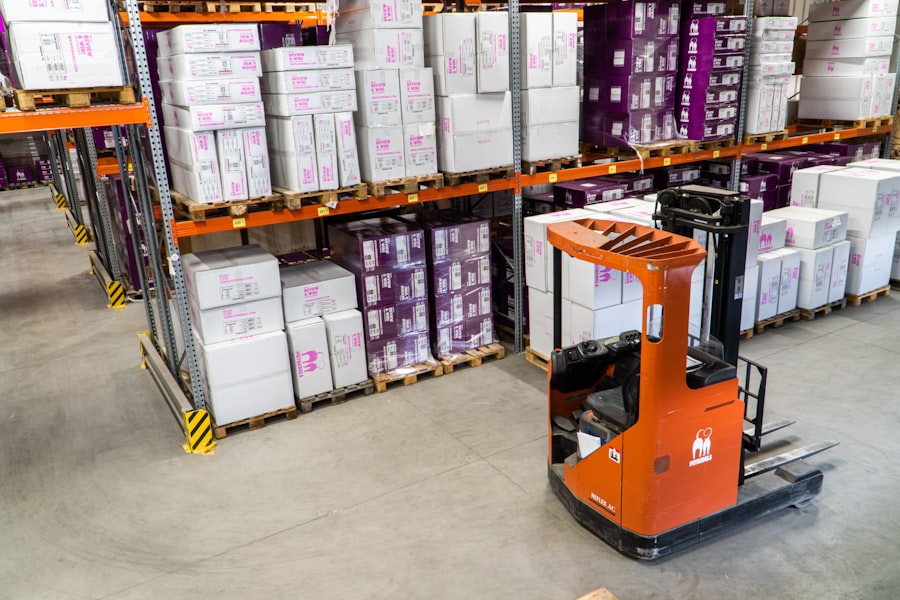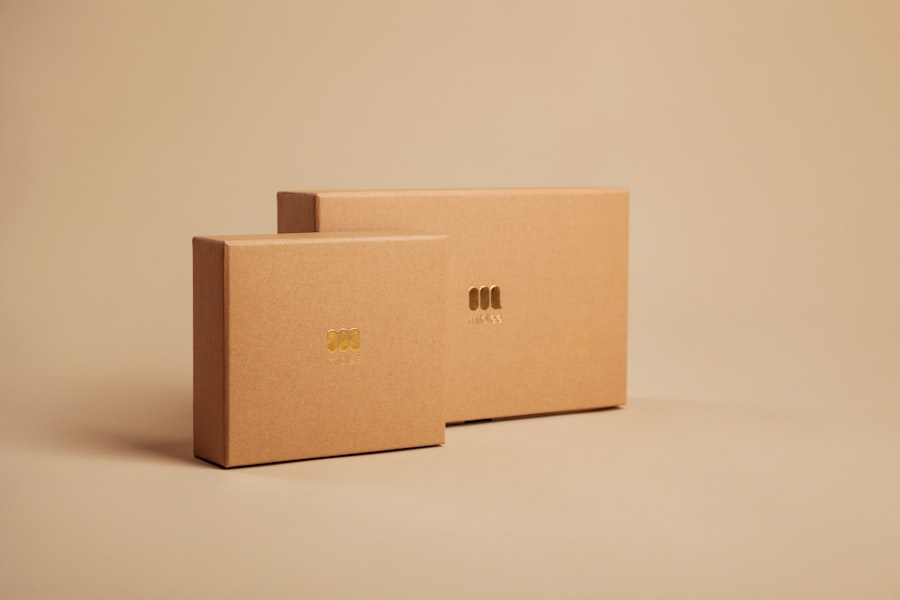The growing concern over plastic pollution has catalyzed a significant shift in materials science, leading to the development of biodegradable plastics. These innovative materials are designed to decompose more quickly than traditional plastics, which can persist in the environment for hundreds of years. Biodegradable plastics are derived from renewable resources, such as corn starch, sugarcane, and other plant-based materials, or they can be synthesized from petrochemical sources with additives that promote degradation.
The urgency to address the environmental impact of plastic waste has made biodegradable plastics a focal point for researchers, manufacturers, and policymakers alike. The concept of biodegradability hinges on the ability of microorganisms to break down materials into natural substances like water, carbon dioxide, and biomass. This process can occur under specific conditions, which vary depending on the type of biodegradable plastic.
As awareness of the detrimental effects of plastic pollution grows, so does the interest in biodegradable alternatives. These materials not only promise to reduce landfill waste but also aim to minimize the ecological footprint associated with conventional plastic production and disposal.
Key Takeaways
- Biodegradable plastics are a type of plastic that can break down naturally in the environment, reducing the impact of plastic pollution.
- Types of biodegradable plastics include polylactic acid (PLA), polyhydroxyalkanoates (PHA), and starch-based plastics, each with unique properties and applications.
- Innovations in biodegradable plastic production include the use of renewable resources, improved biodegradation rates, and enhanced mechanical properties.
- Advantages of biodegradable plastics include reduced environmental impact, potential for closed-loop recycling, and versatility in applications.
- Challenges and limitations of biodegradable plastics include limited availability of recycling facilities, slower biodegradation in certain conditions, and potential for contamination in recycling streams.
- Applications of biodegradable plastics range from packaging and food service products to agricultural mulch and medical implants, with potential for expansion into new industries.
- The future of biodegradable plastics involves continued research and development to improve performance and end-of-life options, as well as increased consumer and industry adoption.
- In conclusion, using biodegradable plastics can help mitigate the environmental impact of traditional plastics, but it is important to consider the full life cycle and end-of-life management to maximize their benefits.
Types of Biodegradable Plastics
Biodegradable plastics can be broadly categorized into two main types: those derived from renewable resources and those that are petroleum-based but engineered for biodegradability. The first category includes bioplastics such as polylactic acid (PLA) and polyhydroxyalkanoates (PHA). PLA is produced through the fermentation of sugars derived from corn or sugarcane and is widely used in packaging, disposable cutlery, and 3D printing.
PHA, on the other hand, is produced by microbial fermentation of organic materials and is known for its versatility and ability to degrade in various environments. The second category encompasses conventional plastics that have been modified with additives to enhance their biodegradability. These include polyethylene (PE) and polypropylene (PP) that have been treated with pro-oxidant additives to facilitate breakdown when exposed to heat, light, or moisture.
While these materials may offer some advantages in terms of processing and cost, their degradation often requires specific conditions that may not be met in natural environments, raising questions about their true environmental benefits.
Innovations in Biodegradable Plastic Production
Recent advancements in biodegradable plastic production have focused on improving the efficiency and sustainability of manufacturing processes. One notable innovation is the development of bio-based feedstocks that can be sourced from agricultural waste or non-food crops. This approach not only reduces competition with food supply but also promotes a circular economy by utilizing materials that would otherwise be discarded.
For instance, researchers are exploring the use of lignocellulosic biomass—such as wood chips and straw—as a raw material for producing biodegradable plastics. Another significant innovation is the enhancement of biodegradability through the incorporation of nanomaterials. Nanocomposites can improve the mechanical properties and thermal stability of biodegradable plastics while also promoting faster degradation rates.
For example, adding cellulose nanocrystals or chitosan nanoparticles can create a more porous structure that allows microorganisms to penetrate and break down the material more effectively. These advancements are paving the way for high-performance biodegradable plastics that can compete with traditional options in various applications.
Advantages of Biodegradable Plastics
The advantages of biodegradable plastics extend beyond their potential for reducing environmental impact. One key benefit is their ability to decompose under specific conditions, which can significantly alleviate the burden on landfills. Unlike conventional plastics that can take centuries to break down, biodegradable options can decompose within months or years, depending on environmental factors such as temperature, humidity, and microbial activity.
This rapid degradation can help mitigate the accumulation of plastic waste in terrestrial and marine ecosystems. Additionally, biodegradable plastics often have a lower carbon footprint compared to their petroleum-based counterparts. The production of bioplastics typically involves less energy consumption and lower greenhouse gas emissions, particularly when sourced from renewable feedstocks.
For instance, studies have shown that PLA production emits approximately 30-50% less CO2 than traditional polyethylene production. Furthermore, some biodegradable plastics can be composted alongside organic waste, contributing to nutrient cycling and soil health while reducing landfill contributions.
Challenges and Limitations of Biodegradable Plastics
Despite their promising attributes, biodegradable plastics face several challenges that hinder widespread adoption. One major limitation is the variability in degradation rates based on environmental conditions. While some biodegradable plastics may break down efficiently in industrial composting facilities, they may not decompose effectively in natural settings such as oceans or landfills where conditions are less controlled.
This inconsistency raises concerns about their actual environmental benefits and complicates waste management strategies. Another challenge lies in consumer perception and understanding of biodegradable plastics. Many consumers mistakenly believe that all biodegradable products will decompose in any environment without proper disposal methods.
This misconception can lead to improper disposal practices, such as littering or mixing biodegradable plastics with non-biodegradable waste streams. Education and awareness campaigns are essential to inform consumers about the correct disposal methods for biodegradable products to ensure they achieve their intended environmental benefits.
Applications of Biodegradable Plastics
Applications in the Packaging Industry
Biodegradable plastics have become increasingly popular across various industries due to their versatility and eco-friendly properties. In the packaging sector, they are being used for food containers, bags, and films that require short-term durability without long-term environmental impact. Companies like NatureWorks produce Ingeo, a PLA-based material used in food packaging that offers both performance and sustainability.
Agricultural Uses and Benefits
In agriculture, biodegradable plastics are utilized for mulch films that help suppress weeds while decomposing into the soil after use. This practice not only reduces plastic waste but also enhances soil health by returning organic matter back into the ecosystem.
Medical Applications and Future Prospects
Biodegradable plastics are also being explored for use in medical applications such as sutures and drug delivery systems, where controlled degradation is crucial for patient safety and efficacy. This emerging trend highlights the potential of biodegradable plastics to make a significant impact in various fields beyond packaging and agriculture.
Future of Biodegradable Plastics
The future of biodegradable plastics appears promising as research continues to advance in material science and production techniques. Innovations in biotechnology are paving the way for more efficient methods of producing bioplastics from diverse feedstocks, including waste materials from agriculture and food processing industries. This shift towards utilizing waste not only addresses resource scarcity but also contributes to waste reduction efforts.
Moreover, regulatory frameworks are evolving to support the adoption of biodegradable plastics. Governments around the world are implementing policies aimed at reducing single-use plastics and promoting sustainable alternatives. For instance, the European Union has set ambitious targets for reducing plastic waste and increasing recycling rates, which could drive demand for biodegradable options in various sectors.
As consumer awareness grows and demand for sustainable products increases, the market for biodegradable plastics is expected to expand significantly.
Conclusion and Recommendations for Using Biodegradable Plastics
In light of the pressing environmental challenges posed by plastic pollution, biodegradable plastics present a viable alternative that warrants further exploration and investment. However, it is crucial for consumers, manufacturers, and policymakers to approach their use with a clear understanding of their limitations and proper disposal methods. Education initiatives should focus on informing consumers about how to dispose of biodegradable products correctly to maximize their environmental benefits.
Manufacturers should prioritize transparency regarding the biodegradability claims of their products, ensuring that consumers have access to accurate information about how and where these materials will break down effectively. Additionally, continued investment in research and development will be essential to overcome existing challenges related to performance, degradation rates, and production efficiency. As we move towards a more sustainable future, embracing biodegradable plastics as part of a broader strategy to reduce plastic waste will be critical.
By fostering collaboration among stakeholders across industries—ranging from agricultural producers to packaging manufacturers—society can work towards innovative solutions that balance convenience with environmental responsibility.
While exploring the advancements in biodegradable plastics, it’s essential to consider the broader context of sustainability and eco-friendly technologies. An interesting read that complements this topic is an article that delves into the best niches for affiliate marketing on YouTube, which includes a segment on promoting eco-friendly products. This can be particularly relevant for those looking to market innovations in biodegradable plastics. You can read more about this and get insights on how to effectively reach an audience interested in sustainable solutions by visiting Best Niche for Affiliate Marketing in YouTube. This article provides valuable information on how to leverage YouTube’s platform to advocate for and promote environmentally friendly products, including biodegradable plastics.
FAQs
What are biodegradable plastics?
Biodegradable plastics are plastics that can be broken down by microorganisms into natural substances such as water, carbon dioxide, and biomass. This process occurs over a period of time, depending on the specific type of biodegradable plastic.
What are the benefits of using biodegradable plastics?
Using biodegradable plastics can help reduce the amount of plastic waste in the environment, as they break down more easily than traditional plastics. This can help mitigate the negative impact of plastic pollution on ecosystems and wildlife.
What are some innovations in biodegradable plastics?
Innovations in biodegradable plastics include the development of new materials that are both biodegradable and have desirable properties for various applications. This includes biodegradable plastics that are suitable for packaging, agricultural use, and medical applications.
How do biodegradable plastics compare to traditional plastics?
Biodegradable plastics have the advantage of being able to break down into natural substances, reducing their impact on the environment. However, they may have limitations in terms of durability and cost compared to traditional plastics.
Are there any challenges associated with biodegradable plastics?
Challenges associated with biodegradable plastics include the need for proper disposal and recycling infrastructure to ensure that they can biodegrade effectively. Additionally, there may be concerns about the potential impact of biodegradable plastics on food safety and the overall sustainability of their production.



